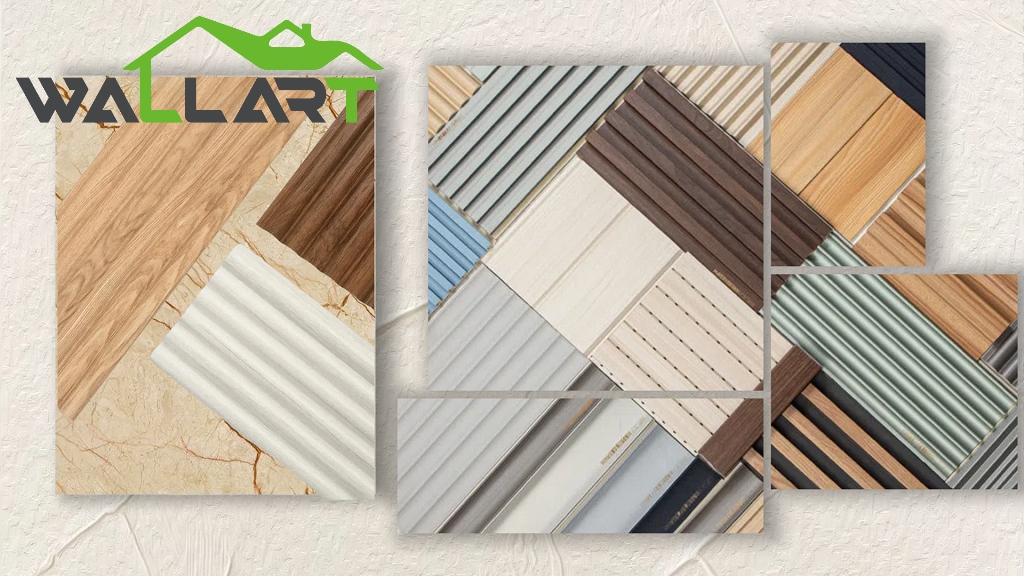I. Industry Overview: Status and Scale
China has become a major producer, consumer, and exporter of decorative and refinishing materials worldwide. The total amount of material-leading products has ranked first in the world for many years. The development of the industry is deeply tied to the real estate and construction decoration industries, and continues to grow with the demand of downstream industries.
Ⅱ. Core Market Trends in 2025
ⅰ. Green and environmental protection becomes a major trend
Demand side: With growing global environmental awareness and the deepening concept of sustainable development, consumers' demands for health and safety are escalating. "Eco-friendly decorative materials" such as low-VOC paints, formaldehyde-free panels, and recyclable materials are becoming increasingly popular.
Policy Side: The government will introduce more environmental policies and regulations, forcing the industry to transition towards green and low-carbon development. "Hazard-free, pollution-free, non-radioactive, beneficial to environmental protection and human health" has become the core evaluation standard for materials.
ⅱ. Accelerated penetration of intelligence and digitalization
Intelligent materials: Technologies such as the Internet of Things and AI are driving the implementation of smart decorative materials, such as smart dimming paint, self-cleaning tiles, and smart temperature-controlled flooring. Provide consumers with convenient and comfortable living experience. Furthermore, smart wall panels (embedded with LED lights and sensors) can be integrated with smart home systems to enable touch-sensitive operation, temperature control, and other functions.
Digitalization of industries: Digital technologies help companies optimize production processes, improve efficiency, and reduce costs. They also promote the development of e-commerce in the industry, reshaping sales and service models.
ⅲ. Continuously growing demand for personalized customization
As consumers demand more differentiated and unique living spaces, decorative materials companies are focusing on customized services. Consumers can customize the color, pattern, and texture of materials to create their own unique living spaces. This trend not only improves consumer satisfaction, but also opens up new market growth points for companies.
ⅳ. Accelerating R&D and Application of New Materials
Traditional decorative materials are no longer able to meet the market's demand for high-performance, multifunctional, and environmentally friendly materials. Companies will increase R&D investment to promote the development of innovative materials such as high-performance composites(such as WPC), nanomaterials, bio-based materials (such as bamboo fiber composites), and graphene-coated materials. These new materials will achieve advancements in strength, durability, environmental friendliness, and functionality, becoming a core driver of industry innovation.
ⅴ. Industrial Upgrading and Optimizing the Competitive Landscape
Industrial Upgrading: To enhance product quality and core competitiveness, companies will continue to increase R&D investment. Promote all-round upgrading of production technology, product performance and service models, and transform towards "efficiency and standardization".
Intensified Competition: With the expansion of the market and the lowering of industry barriers to entry, market competition will intensify. Leading companies will leverage their technological and scale advantages to further capture market share, driving increased industry concentration.
Ⅲ. Long-Term Development Directions
Combining industry trends with the requirements of ecological building concepts, decorative and finishing materials will develop in the following directions in the long term.
Function: Develop towards multifunctionality, serialization, and comprehensive matching. Strengthen the durability, anti-pollution, fireproof and flame retardant properties of the material.
Resource: Develop towards energy conservation, water conservation, and wood and steel substitution, meeting sustainable development needs and reducing resource consumption.
Application: Develop towards finished products, standardized installation, and simplified construction to improve decoration efficiency.
Value: Develop in the direction of diversification, quality, high-end and high added value to meet the needs of consumption upgrades.
Overall, by 2025, China's decorative and renovation materials industry will be based on "green" and driven by "intelligence, customization, and innovation." In the process of industrial upgrading and competition optimization, we will continue to provide core support for improving the living environment.

Post time: Oct-21-2025




